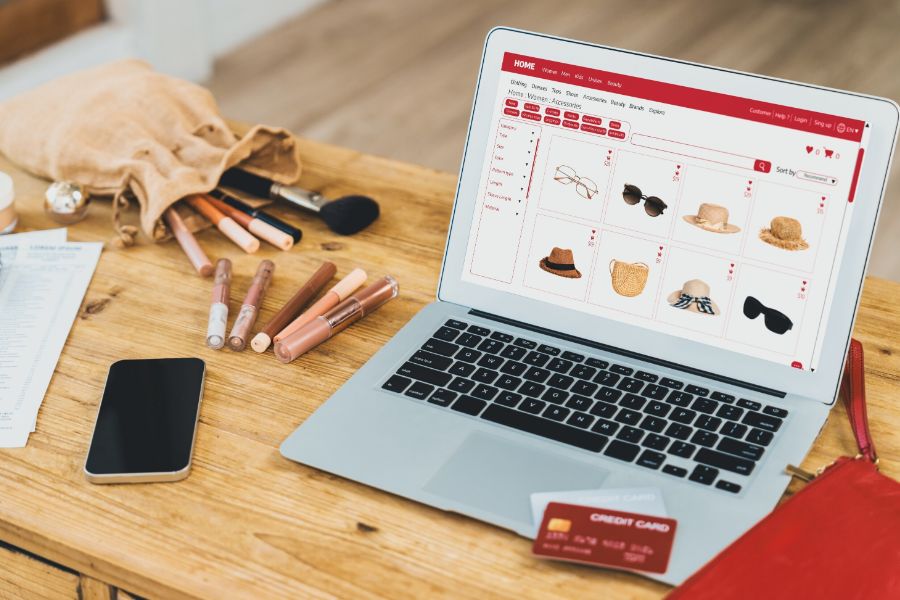has become a key factor in staying competitive. BigCommerce multiple-store feature presents a solution that allows businesses to centralize their operations, optimize resource allocation, and enhance the customer experience. This article explores the concept of BigCommerce multi store, delving into its benefits, setup process, and the supporting apps that facilitate seamless management.
What is a BigCommerce Multi Store?
Multi-store refers to a collection of distinct stores, particularly in eCommerce. In online retail, a multi-store setup enables a single retailer to manage multiple stores using a unified control panel efficiently. BigCommerce multiple-store feature streamlines this process by allowing retailers to consolidate settings across all their stores within a single account. This eliminates the necessity to create separate accounts for each website.
If you’re looking to expand your eCommerce reach by launching additional stores, there’s no requirement to register for new BigCommerce accounts. The convenience of the BigCommerce multiple-store functionality means you can seamlessly introduce new stores while managing their settings collectively.
In this context, ConnectPOS emerges as a highly valuable solution. It offers direct integration with BigCommerce, making it an efficient and comprehensive tool for managing multiple stores. By utilizing ConnectPOS with BigCommerce’s functionality, businesses can enhance their multi-store management strategy and improve overall operational efficiency.
Pros and Cons of Using BigCommerce Multi Store
Before delving into the step-by-step tutorials for setting up the BigCommerce multiple-store feature, it’s essential to grasp this configuration’s advantages and disadvantages. This concept might be relatively unfamiliar to some, so online merchants should comprehensively understand the multistore approach.
Without further ado, here’s a breakdown of the benefits and drawbacks associated with managing BigCommerce multiple stores:
Pros of Using BigCommerce Multi Store
Enhanced Shopping Experience:
Most visitors to your website arrive with a clear idea of what they’re seeking or for product comparisons. However, up to 62 percent of respondents also wished online shopping was more entertaining, and 58 percent would not shop with a merchant that does not meet their expectations. This highlights the importance of catering to specific needs and providing an engaging and satisfying shopping experience to retain customers.
Crafting an intuitive online store that streamlines the customer’s journey is crucial. The fewer clicks they need to find their desired products, the lower the likelihood of them leaving your site prematurely. BigCommerce multiple-store feature comes into play here:
- Instead of navigating through numerous category pages, you can establish distinct sites for each product section. This facilitates the immediate location of items, potentially leading to higher conversions. While seemingly minor, this optimization can yield substantial profits. Once implemented, the impact becomes evident.
- Furthermore, dedicating a website to each product category aids in effectively reaching the relevant consumer base for those products.
SEO Benefits in Marketing:
As of March 2023, Google remains the top global search engine, commanding an impressive desktop market share of nearly 84 percent. This dominance underscores the importance of optimizing your website’s content and structure to align with Google’s algorithms, thus increasing the likelihood of appearing in relevant search results and capturing a substantial portion of organic traffic.
- How does SEO (search engine optimization) play out within a multi-store eCommerce setup? Ensuring that customers can easily locate their desired products on your site is paramount. Search engines are the primary means users find products and are likely to click on the top search results. By ensuring the most relevant shop appears at the forefront, customers are more inclined to stay engaged.
- Increasing the number of entry points to your content improves SEO rankings. With multiple online stores, you can effectively amplify the impact of your SEO efforts. Having several distinct sites increases your chances of ranking for various search queries since these pages are separate entities.
Global Reach:
Managing the BigCommerce multiple stores simultaneously opens doors for market expansion across different countries.
- Each country can be catered to with a dedicated website featuring region-specific content, images, currency, and language.
- Localization tactics can be better executed by tailoring content to specific geographical areas. This differentiation gives your store a competitive edge, setting it apart from competitors and expediting conversion.
Cons of Using BigCommerce Multi Store
Information Update Challenges:
- Maintaining numerous online stores comes with the challenge of consistently updating information. Every online merchant desires the latest product information and content to maximize profitability. However, managing updates—such as uploading content, images, and translations across various websites—can be time-consuming and demanding. These processes might take days to complete.
- Furthermore, adjusting an item’s status, like indicating “sold out” or “restocked,” necessitates rapid updates across all associated websites. It is advisable to implement specialized tools to address this issue, although it might entail additional costs.
Content Duplication:
- The primary rationale for creating additional websites is to broaden product diversity and connect with distinct customer segments. Many online retailers aim to customize the content and catalogs on each site, tailoring them to different audiences. However, managing multiple stores on BigCommerce can present challenges in this aspect.
- A notable concern is the potential for significant content duplication across catalogs or blogs of various online stores. This arises because these stores share the same product inventory and control panel. Making adjustments individually for each instance can consume considerable time and effort.
Financial Implications:
- Adopting Bigcommerce multiple-store functionality eliminates paying multiple monthly fees for individual accounts. However, expenses can accumulate due to the costs associated with necessary extension tools to ensure smooth website operations. Hosting servers, in particular, demand a significant investment to ensure durability, stability, and high performance.
- If you’re considering implementing this approach, prudent financial planning is essential to sustain your business effectively.
The BigCommerce multiple-store feature offers numerous benefits, including an enhanced shopping experience, SEO advantages, and global reach. However, challenges like managing information updates, dealing with content duplication, and incurring additional costs must be considered before committing to this approach.
How to set up BigCommerce Multi Store
Setting up a BigCommerce multi store allows you to manage multiple online storefronts under a single account, targeting diverse audiences and product offerings. Here’s a step-by-step guide to help you set up your BigCommerce multiple stores:
- Log into Your BigCommerce Account: Access your BigCommerce admin dashboard by logging in with your credentials.
- Check Plan Compatibility: Ensure your BigCommerce plan supports the Multi-Store feature. If you’re unsure, review your plan details or contact BigCommerce support.
- Plan Your Stores: Define the purpose and audience for each store. Decide on distinct branding, products, and customization for each storefront.
- Create Additional Stores: To establish additional stores within your account, navigate to the “Store Setup” or “Settings” section in your admin panel. Search for and select the “Create Store” function. Here, furnish the new store with a name, domain (either a subdomain or new domain), and essential settings to complete the setup.
- Customize Each Store: Tailor the appearance, theme, colors, and design of each store to align with its unique branding.
- Manage Catalogs: Prevent content duplication by using product settings to assign items to specific stores. Within the product settings, navigate to the “Storefront Visibility” section and choose where the product should be displayed or excluded across various stores.
- Set Up Payment Methods and Shipping: Configure payment gateways and shipping options based on the preferences and requirements of each store.
- Adjust Pricing: Customize product pricing for each store if you need to offer different prices for various regions or customer groups.
- Configure SEO Settings: Optimize SEO settings for each store individually to enhance its visibility in search engines.
- Customize Checkout and Cart Settings: Personalize each store’s checkout process and cart appearance to create a consistent shopping experience.
- Create Store-Specific Content: Craft unique content pages, blogs, and information for each store to cater to its specific audience.
- Test Thoroughly: Before launching, rigorously test each store’s functionalities, including ordering, payment processing, and navigation.
- Launch the Stores: Once you’re confident in your setup, launch your multi-store setup and make it publicly accessible.
- Monitor Performance: Regularly monitor each store’s performance through analytics. Track sales, traffic, and user behavior to identify areas for improvement.
- Optimize Continuously: Use the insights gained from monitoring to optimize each store’s strategy, user experience, and conversion rates.
- Provide Support: Offer customer support for each store, responding promptly to inquiries and providing assistance.
- Stay Updated: Stay informed about updates to BigCommerce features and stay engaged with your audience through marketing and promotions.
Remember that setting up a BigCommerce multiple stores can be tailored to your business needs. BigCommerce provides resources and support to guide you through the process. If you encounter any challenges, don’t hesitate to seek assistance from their customer support.
Apps for Managing BigCommerce Multiple Stores
Here’s more information about each of the apps designed to help you manage multiple stores on the BigCommerce platform:
ConnectPOS
- ConnectPOS is a powerful app for managing BigCommerce multiple stores. It seamlessly integrates point-of-sale capabilities, ensuring unified inventory management and customer data across physical and online storefronts.
- Real-time inventory updates prevent overselling, while barcode scanning enhances efficiency and accuracy.
- Integrated payment processing streamlines checkouts and a centralized control panel simplifies multi-store management. Responsive customer support is available whenever needed.
- Its comprehensive features make ConnectPOS an essential tool for enhancing operations and customer experiences across diverse sales channels.
SKULabs
When considering tools for managing multiple stores, SKULabs is one of the best options due to its exceptional features tailored for multisite management.
- SKULabs offers low stock warnings that promptly alert you when inventory levels run low, ensuring timely restocking and avoiding customer wait times.
- Barcode scanning is another advantage, streamlining the encoding process and minimizing errors, thus saving time and enhancing customer satisfaction.
- SKULabs’s real-time synchronization addresses a common challenge of maintaining up-to-date information across BigCommerce multiple stores, ensuring automatic inventory updates across distribution channels when your shop and catalogs are connected.
- Moreover, the availability of 24/7 customer support provides assistance whenever needed.
BrightPearl
- BrightPearl’s strength for Bigcommerce multi store lies in its automated accounting system, which seamlessly updates payment receipts, shipments, and stock receives, eliminating manual compilation. This results in up-to-date reports without effort.
- The app’s real-time synchronization further allows it to manage sales volume effortlessly by synchronizing campaigns and distribution outlets, facilitating streamlined operations and consolidation of inventory management within one control panel.
Linnworks
- Linnworks for Bigcommerce multi store has similarities with SKULabs and Brightpearl regarding features and pricing. However, Linnworks distinguishes itself through advanced reporting and analytics software. This functionality enables the customization of reports based on specific groups, shops, and dates.
- Additionally, it empowers you to track customer demand for specific products, providing insights to adapt inventory requirements and make informed decisions.
Shopventory
- Leveraging POS integration, Shopventory ensures a seamless administrative experience suitable for businesses of various sizes.
- It stands out as a quick and user-friendly solution for inventory synchronization, acting as a coordination hub for all products and maintaining consistency across online websites.
- Additional reporting tools, including inventory valuation reporting, dead and low stock reporting, and vendor profitability reporting, provide valuable insights for effective inventory management and strategic decision-making.
Conclusion
Streamlining Operations with BigCommerce Multi-StoreIn today’s fast-paced eCommerce ecosystem, the ability to manage multiple stores efficiently is a game-changer. BigCommerce multiple stores empowers businesses to streamline operations, address market-specific needs, and maintain consistent branding across various storefronts. By understanding the advantages, considering the setup process, and utilizing supporting apps, businesses can harness the power of BigCommerce multi store to simplify operations and enhance their overall online presence and customer engagement. If you want to consult about ConnectPOS, please contact us.
ConnectPOS is a all-in-one point of sale solution tailored to meet your eCommerce POS needs, streamline business operations, boost sales, and enhance customer experience in diverse industries. We offer custom POS with features, pricing, and plans to suit your unique business requirements.




